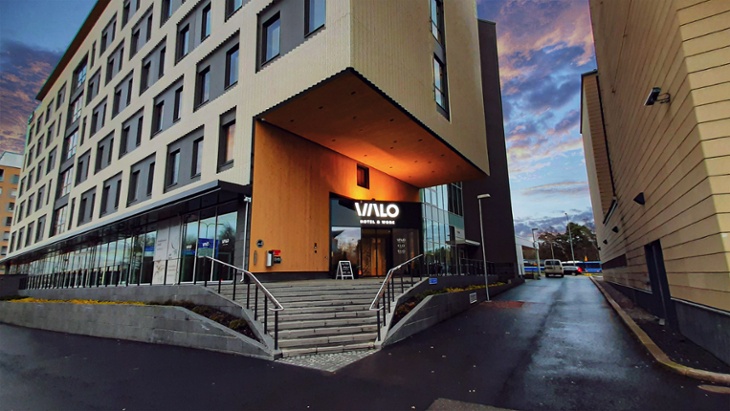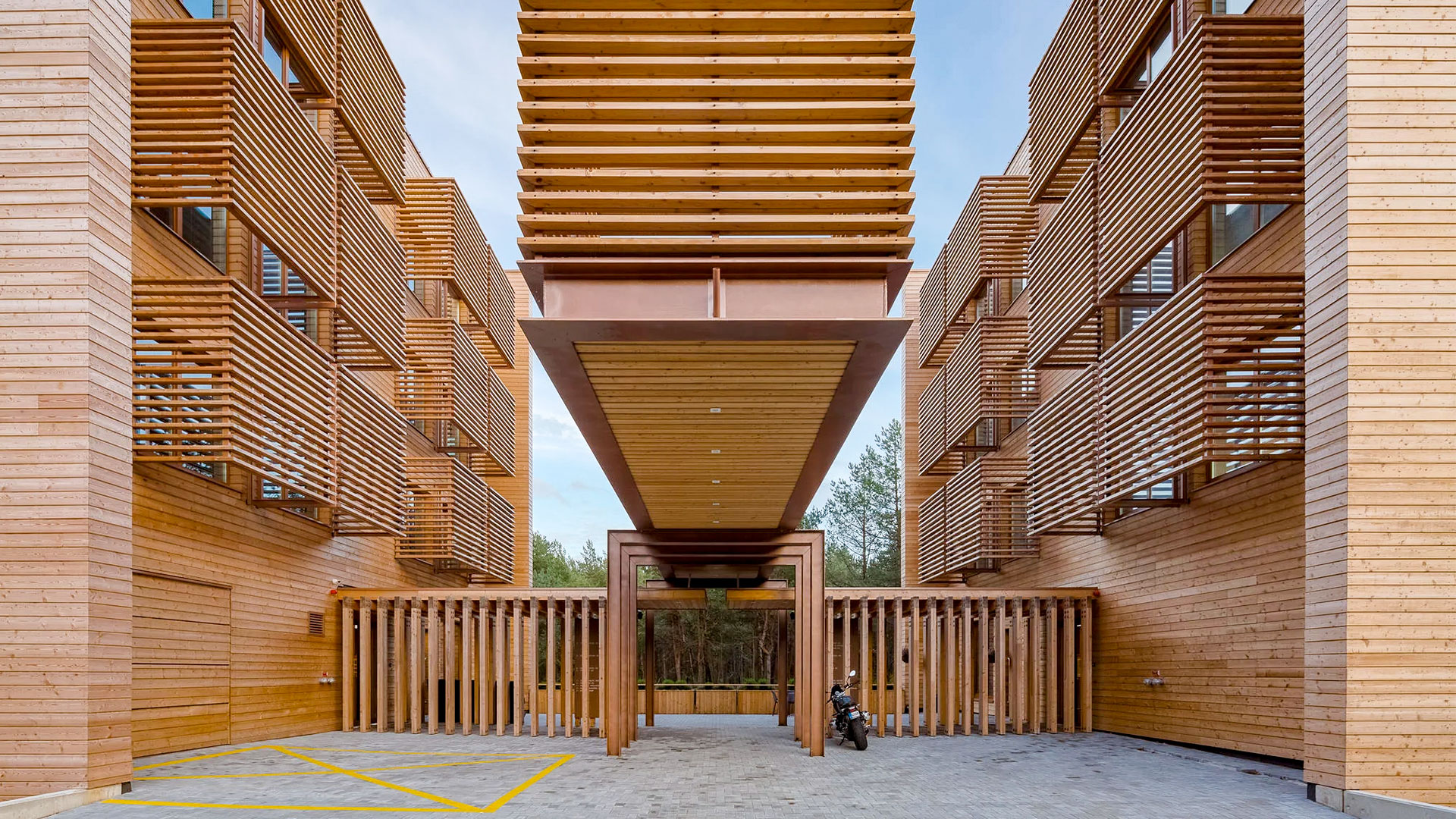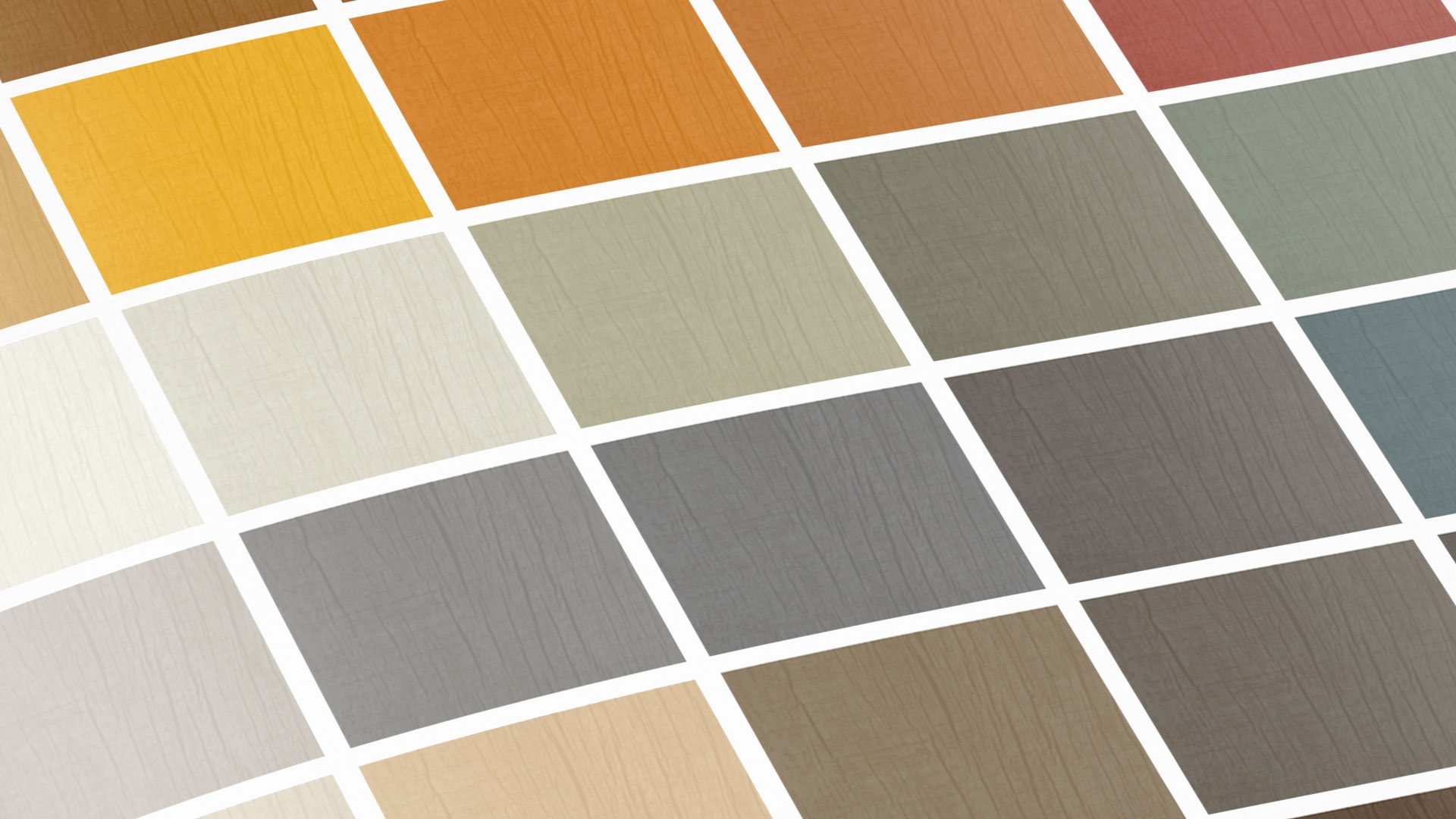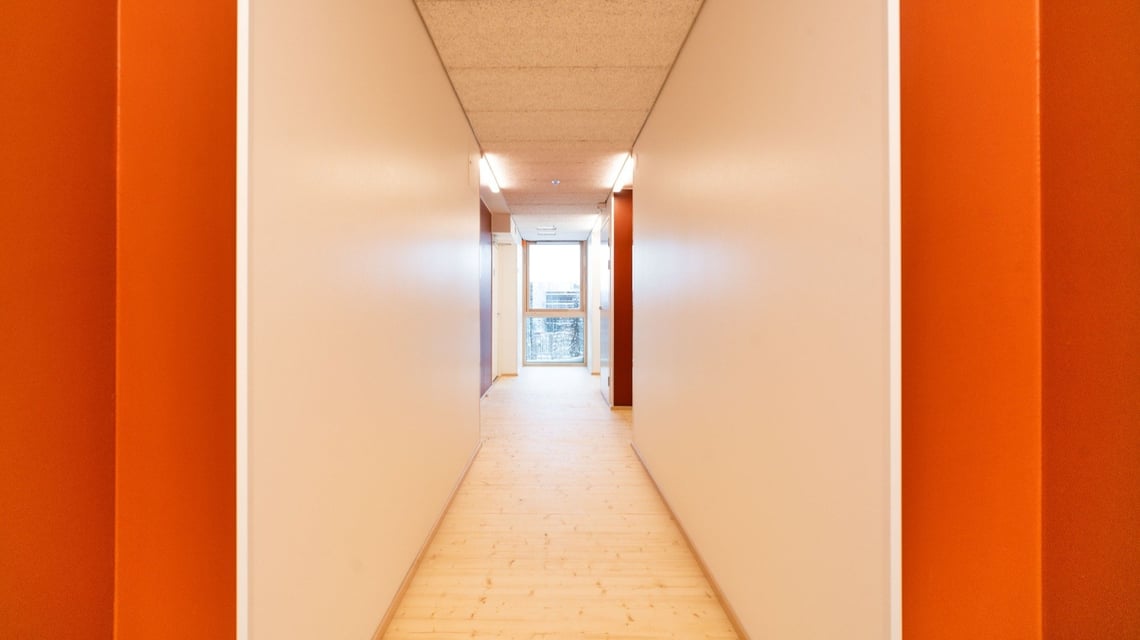In addition to several other factors, the wood species influences how the translucent colour is used in the fire protection treatment of the wood product. The best way to ensure fire protection for a wood product that meets fire class B-s1, d0 in the desired translucent colour is to order hue samples from Nordtreat.
Colour expert Taru Huokuniemi explains how the wood species affects the final hue of fire retardant, and how Nordtreat helps designers choose the right hue.
The new-generation NT DECO fire retardant enables the fire protection of Euroclass B-s1, d0 compliant wood and the desired translucent colour in the same treatment. This requires a uniform absorption of the quantity of fire retardant specified by the certification on the surface of the wood product. At the same time, care must be taken to ensure that the end result corresponds to the desired hue of the translucent fire retardant.

Nordtreat fire retardants currently have a Euro B-s1, d0 qualifying classification for interior and exterior cladding panels made of spruce, larch or cedar. Industrial fire protection of these with Nordtreat products can also be certified. In addition, Nordtreat has certified the fire protection treatment of spruce CLT and pine glulam and log walls.
HOW THE TREE SPECIES AFFECTS THE HUE OF THE FIRE RETARDANT
Many types of wood are suitable for construction, but in Europe, for example, coniferous wood is most commonly used in the manufacture of interior and exterior cladding panels and massive wooden structures (such as CLT elements): spruce (Picea abies) and larch (Larix sibirica or Larix decidua) and sometimes cedar (e.g. Thuja pliccata). Both spruce and pine (Pinus silvestris) are used in log construction. Different species of deciduous wood and hardwood are also common in interior cladding.
When choosing the hue of translucent fire retardant, it is important to take into account that:
1. The wood species’ own hue affects the final hue
The hues on colour charts cannot take into account the base colour of the surface to be treated. Spruce is a light and uniformly coloured wood species, whereas larch, for example, can be either greenish or reddish depending on the habitat and species. These natural hues of the surface to be treated must be taken into account in the design, as they affect how the desired hue can be achieved in the translucent fire-retardant treatment.
2. The density of the wood species affects the absorption of fire retardant
The density of the wood species also affects how the fire retardant is absorbed in the cells of the wood surface. Coniferous wood species are more porous in cell structure than most hardwood species. Therefore, the even absorption of the required amount of fire retardant, for example in spruce, usually requires fewer treatments than a significantly denser wood such as larch.

THE QUALITY OF THE WOOD PRODUCT ALSO AFFECTS THE FINAL HUE
The colour of the surface to be treated with translucent fire retardant according to the fire class requirements also depends on the roughness of the surface of the wood product. The surface of the wood to be treated may be smooth or slightly rougher, i.e. fine-sawed. For example, the width and profile of the panel, and the surface size and surroundings of the structure, also affect how the colour ultimately looks:
1. Roughening the surface contributes to the absorption of fire retardant
Surface quality affects the absorption of fire retardant. Planing creates a smooth surface that closes the surface tissue of the wood. Therefore, adequate absorption of fire retardant into planed surfaces requires more repeats of treatment than the fire protection of the surface of rougher fine-sawn wood.
Planed surfaces should therefore also be sanded to make them rougher. The sanding dust must be removed before the fire protection treatment. In addition to better absorption, this produces a smoother and more appealing hue.
2. The shapes, size and environment of finished surfaces affect the hue
The width, profile and method of installation of interior and exterior cladding panels contribute to the appearance of the chosen hue in the finished building. The structure caused by the surface and the installation method creates shadows on the surface, which makes the colour look darker than it is.
Colours also look noticeably darker on a large surface than on a small surface. In addition, the shade is influenced by factors such as lighting conditions, the hues of adjacent surfaces and the relationships between the areas.
A HUE SAMPLE WITH THE DESIRED COLOUR SCHEME HELPS IN CHOOSING A HUE
If the hue of the translucent fire retardant is selected directly from a colour chart, the end result on the wood surface will usually show some small deviations. This is because the gloss and surface structure of the paper on the colour chart do not correspond to wood with a different base colour and surface structure. Similar problems arise with digital colour charts.

It is advisable to order hue samples of fire retardant-treated wood in translucent colours from Nordtreat.
“Based on the colour scheme required, we can make any hue. As standard, we offer hue models according to RAL 840 and NCS S colour systems, and our own Nordic Hues shades for planed and finely sawn spruce”, says Nordtreat research and development manager Taru Huokuniemi.
If the purpose is to fire-protect products made of a wood species other than spruce, the best result can be obtained by sending Nordtreat both a hue model and samples of the batch of products to be treated with fire retardant. This allows hue samples to be made as accurately as possible to match the actual fire retardant. For example, achieving the desired shade for reddish or greenish larch requires a different hue in the fire retardant.
To achieve the same shade as another product or material in the same location, the best course of action is to send Nordtreat the actual colour model. For example, it could be tiles, concrete or wallpaper. These colour models are returned to the customer who ordered the hue sample, making it easy to compare the colour model with Nordtreat’s hue sample. However, when comparing the hues of different materials the small deviations in hue due to the differences in materials should be taken into account.
HIGH-QUALITY PIGMENTS RETAIN THE DESIRED HUE
The coloured pastes used by Nordtreat are of the highest possible quality, so there will be no colour changes. In outdoor use, they can also withstand the effects of UV radiation from sunlight. The hue will not change, but may fade slightly over time.
Indoors, the light source can cause metamerism – that is, the colour may appear differently under different light sources. NT DECO tints are manufactured to result in as little metamerism as possible.

